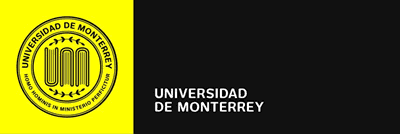Por favor, use este identificador para citar o enlazar este ítem:
http://repositorio.udem.edu.mx/handle/61000/3555| Tipo de documento: | bachelorThesis |
| Título : | Determinants of Poverty in Mexico: A Qualitatlive Regression Analysis |
| Otros títulos : | San Pedro Garza García, UDEM |
| Autor: | Ayala Díaz, Gustavo Adrián Coronado Saucedo, Gerardo Gabriel Garza Garza, Eugenio Gerardo Ovando Martínez, Oscar |
| Tutor : | Garza Rodríguez, Jorge |
| Palabras clave : | Sistema económico;Economía de mercado;Mercado;Pobreza |
| Fecha de publicación : | 2019 |
| Editorial : | San Pedro Garza García, UDEM |
| Citación : | Ayala Díaz, G. A., Coronado Saucedo, G. G., Garza Garza, E. G. y Ovando Martínez, O. (2019). Determinants of Poverty in Mexico: A Qualitatlive Regression Analysis. [Tesis de posgrado UDEM]. Repositorio UDEM. |
| Código: | 33409003187212 |
| Páginas: | 19 páginas |
| Resumen : | "This article examines the determinants of poverty for Mexican households. It uses data from the Mexican National Household Income and Expenditure Survey (ENIGH) 2018 conducted by the Mexican National Institute of Statistics and Geography (INEGI). This study estimates two econometric models. First, a probit model was held to estimate the probability that a Mexican household finds itself in poverty given their socio-economic and demographic characteristics. Results from the probit model indicate that households with more than one member, having a female head, or speaker of a native ethnic group dialect are more likely to be poor. The variables negatively correlated with the probability of being poor were found to be: the age of the household head, if he or she is divorced, his or her educational level greater than unfinished primary school, if he or she does not work in basic support activities and that his or her occupational sector is not the primary one, also if the household is located in Central-North or North regions. Second, the quantile regression approach was used to examine the extent to which the determinants of poverty vary across the poverty spectrum. The sample is divided into five groups: extremely poor, deeply poor, at the poverty line, near poverty and marginally poor. With this model, it was found that most of the coefficients estimated by the OLS method do not explain the extremely poor household’s situation in Mexico. The households in the categories extremely poor and deeply poor are most affected if they are located in the southern region, if the household head speaks a native ethnic group dialect or is an elderly age person. It is observed that achieving a higher educational level is an effective way to increase income across the poverty spectrum. This is the first study of its kind for Mexico, accomplishing a broader picture of the determinants of poverty." |
| Cod. Estudiante : | Gustavo Adrián Ayala Díaz 000196857 Gerardo Gabriel Coronado Saucedo 000342171 Eugenio Gerardo Garza Garza 000535251 Oscar Ovando Martínez 000342700 |
| URI : | http://repositorio.udem.edu.mx/handle/61000/3555 |
| Aparece en las colecciones: | Licenciatura en Economía |
Ficheros en este ítem:
| Fichero | Descripción | Tamaño | Formato | |
|---|---|---|---|---|
| 33409003187212.pdf | 888.21 kB | Adobe PDF |  Visualizar/Abrir |
Este ítem está sujeto a una licencia Creative Commons Licencia Creative Commons

